Handley Page Halifax Mk VII NA337
A few weeks ago a friend and I went to the National Air Force Museum of Canada, just outside of Canadian Forces Base (CFB) Trenton, Ontario. The big attraction is a Halifax bomber that was restored a few years ago and remains the only restored Halifax in the world. The souvenir restoration booklet says that the Restoration Manager believes that it "was completely restored to be actually technically correct according to original manufacturer's drawings."
I have some pictures I took of the exterior. The interior shots and the condition before restoration were scanned from the booklet. The plane was built to SOE standards so it doesn't have a top turret to allow more room for men and supplies. There is a round opening with a fairing around it on the belly aft of the bomb compartment for dropping supplies and men. You can see it if you squint in a few of the photos.
I scanned the cover of the booklet, but it may be too small to read so here is the text:
"This painting by Barry Price, depicts NA337 taking off from Tarrant Rushton Airfield at 1951 hours on the 23rd of April, 1945 to drop supplies for the Norwegian Underground at Mikkelsberget. After a successful drop, the aircraft was on its return and passed over a bridge at Minnesund where it was hit by Anti Aircraft fire from the bridge.
A fire started between the inboard and outboard starboard engines. Unable to put the fire out, Ft/Lt Turnbull decided to ditch the aircraft on Lake Mjosa. Thomas Weightman, who managed to release the dinghy was the only survivor of the ditching. F/Sgt Basset was not found. The rest of the crew, unable to find the dinghy in the dark, died of hypothermia in the icy lake."
I will call this a "walkaround" but am probably missing many shots that should be included, plus the aircraft is inside a rope barrier and there is no access to the interior. It was still nice to see and actually more RCAF personnel flew in Halifaxes than flew in Lancasters, even though not as well-known an aircraft as the Lancaster.
These are the exterior shots from the floor and from the mezzanine for an overhead view.
There is no access to the interior, but it is fully restored. I scanned some photos from the booklet which are dated by their photographer. In order they show:
Control Column Neutral - Throttles Closed - Pitch Full Line
Control Column Back
Top of Cockpit Panel - red buttons for fire extinguishers and black buttons to feather props
Wireless Operator's Desk - Model 1155 Receiver, 1154 Transmitter
Flight Engineer's Panel
Finally an overall front view from the Mezzanine.
A rare plane to see and thought I would share the photos.
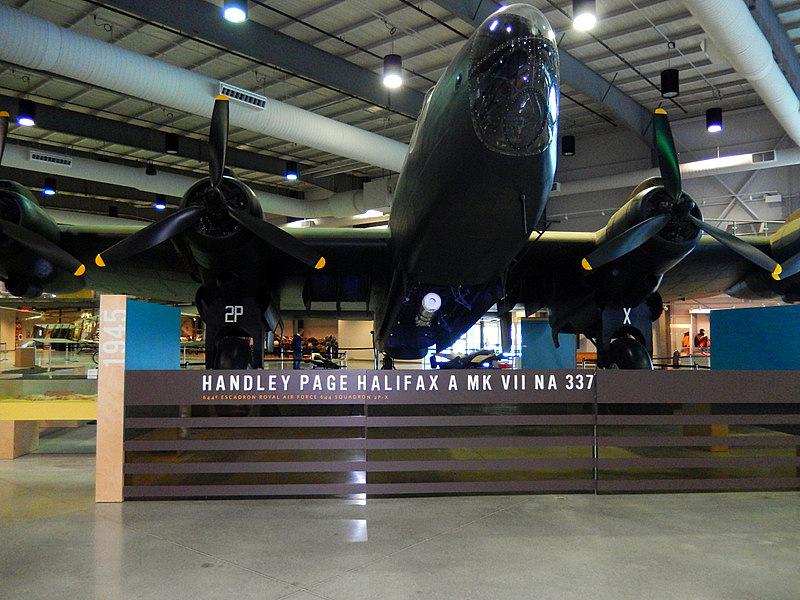

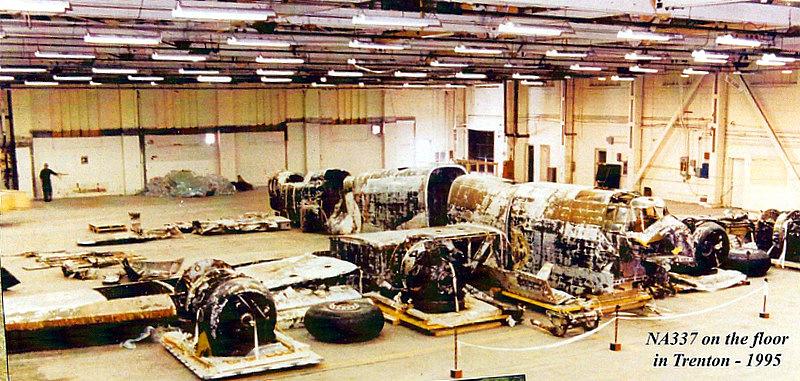

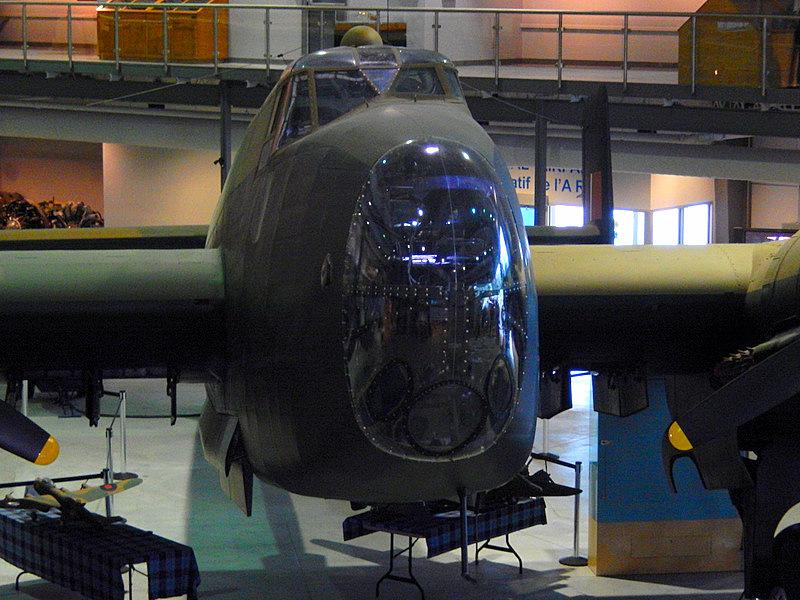
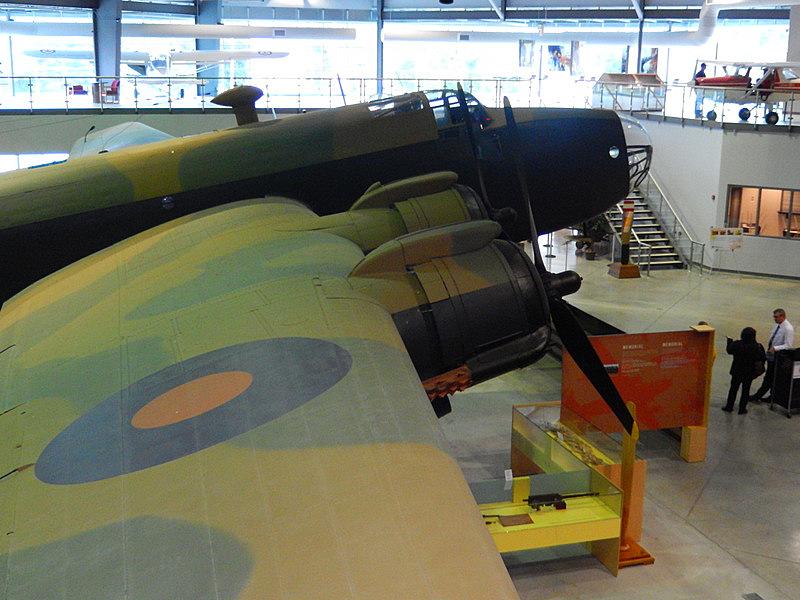
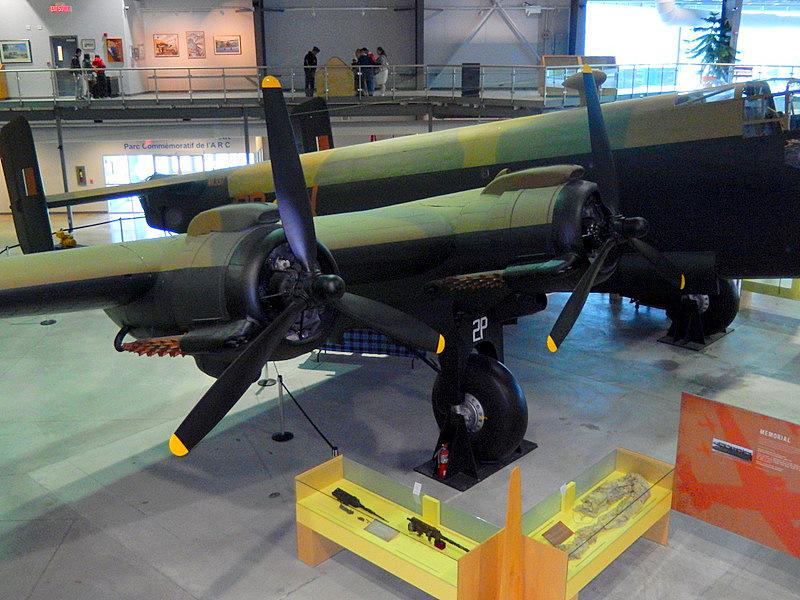

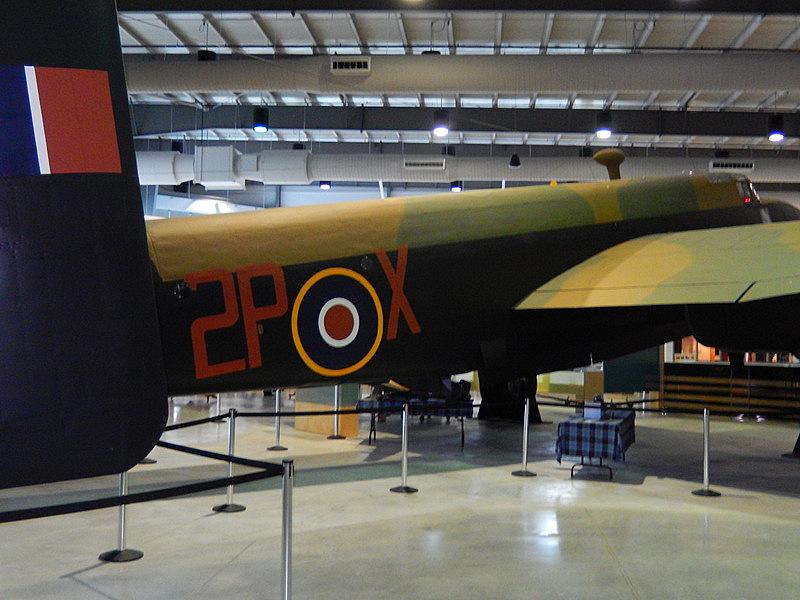
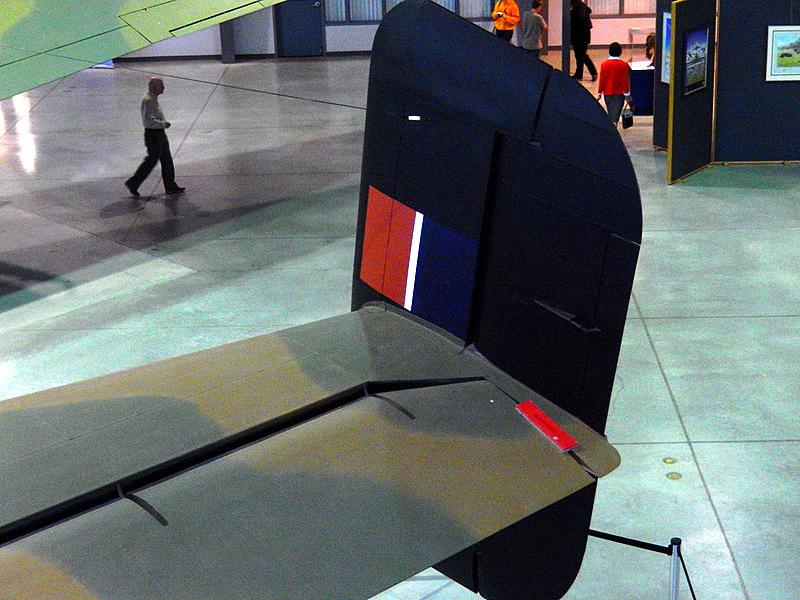
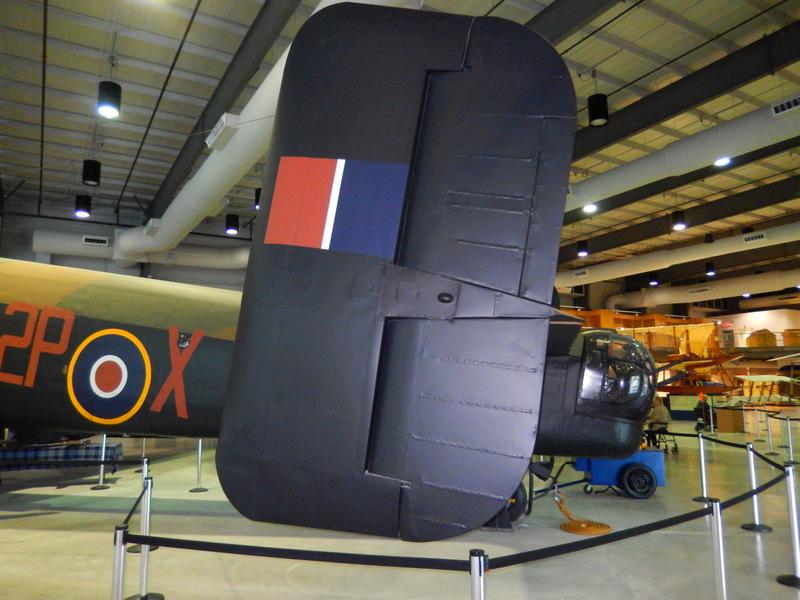

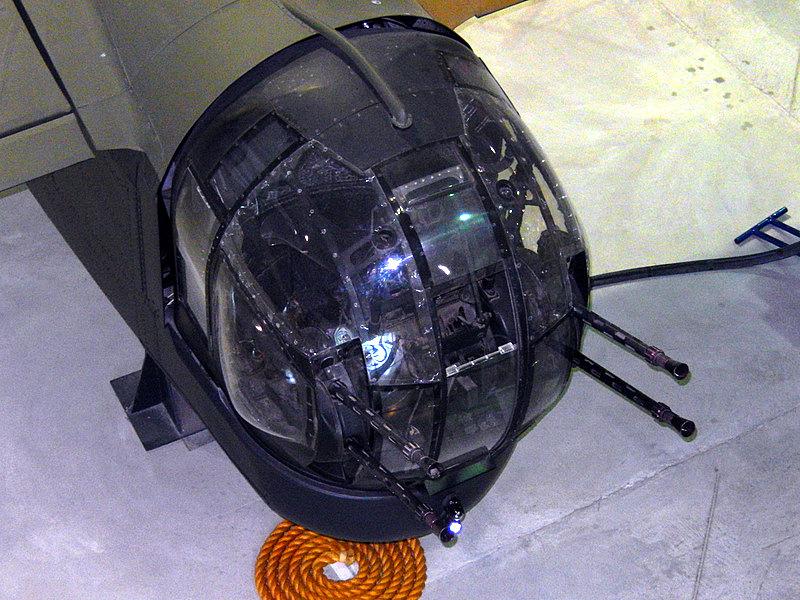



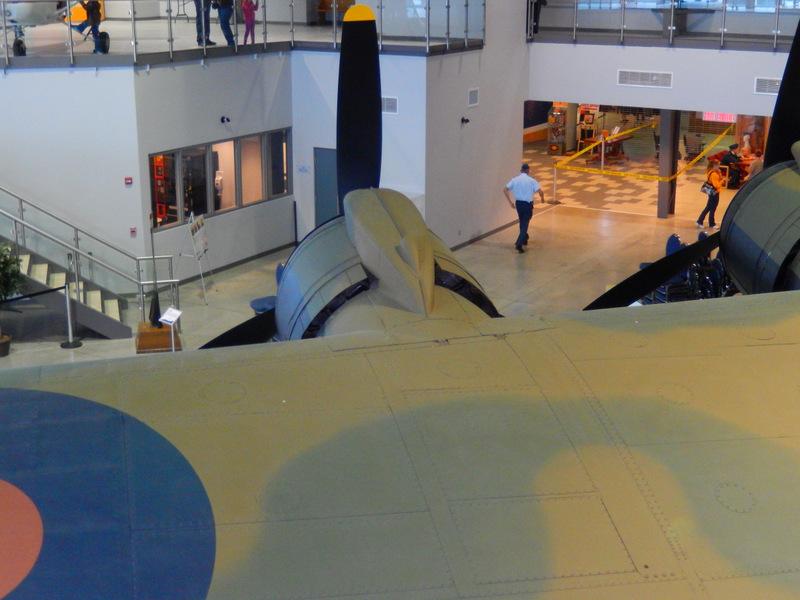
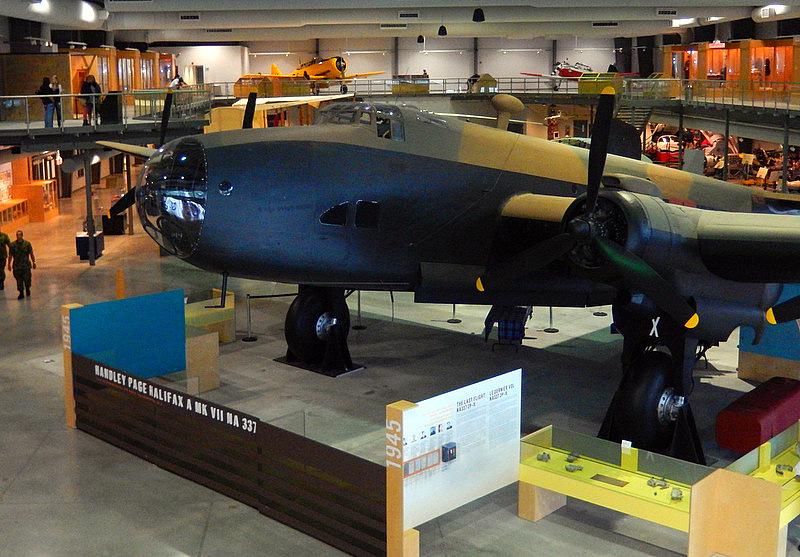
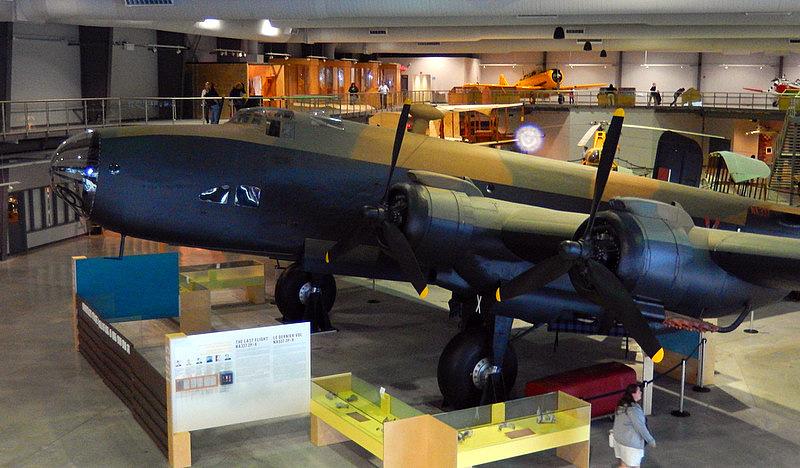


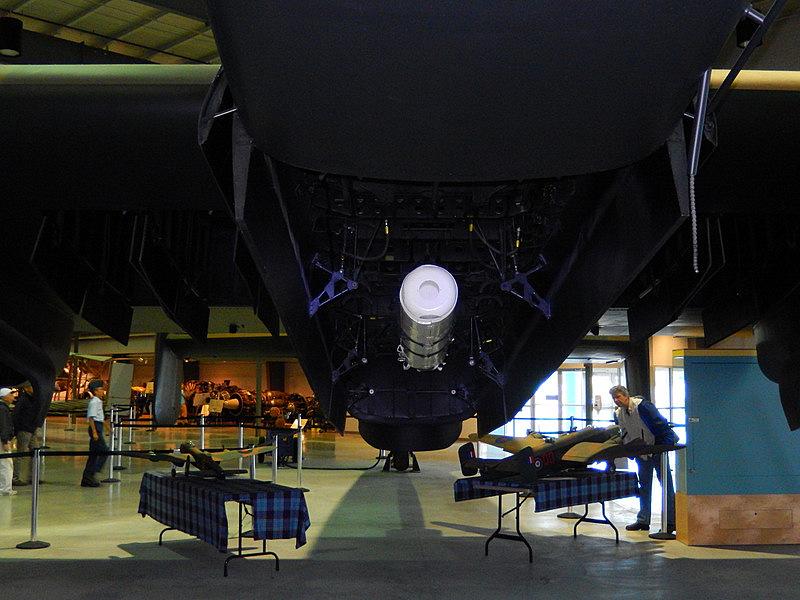
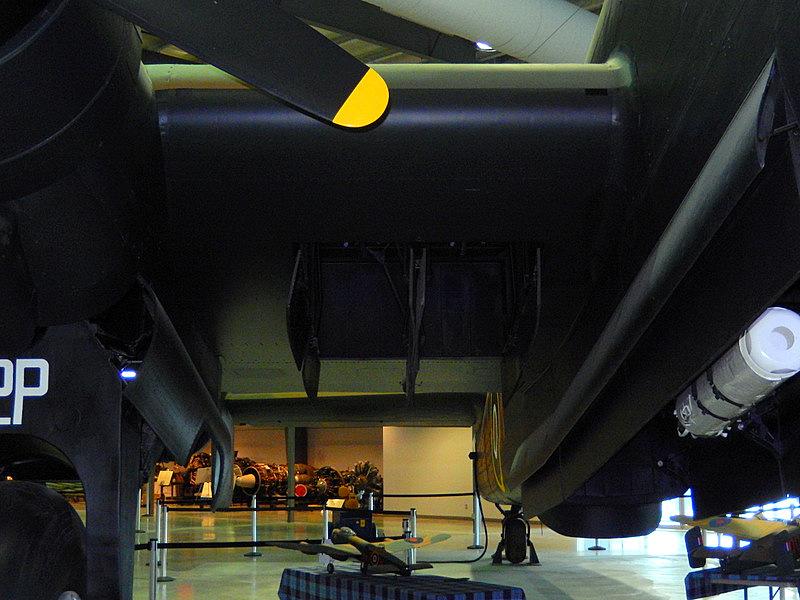


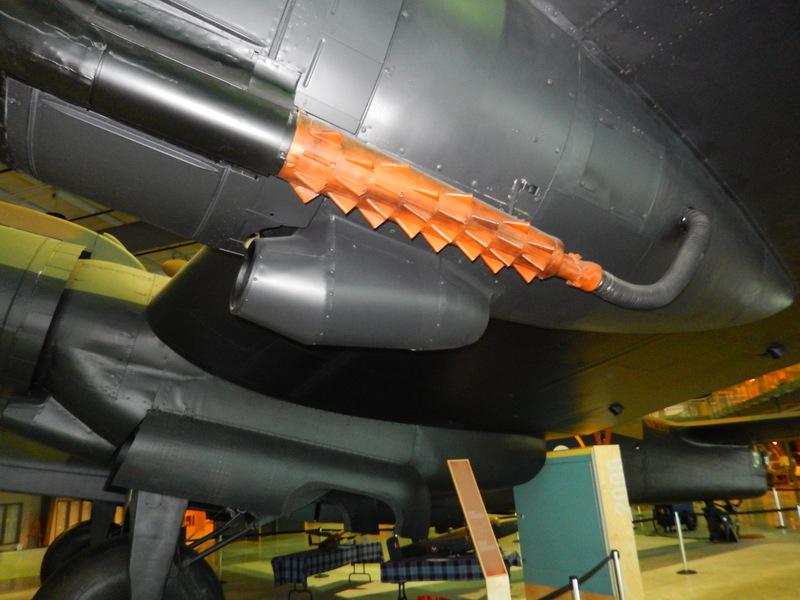
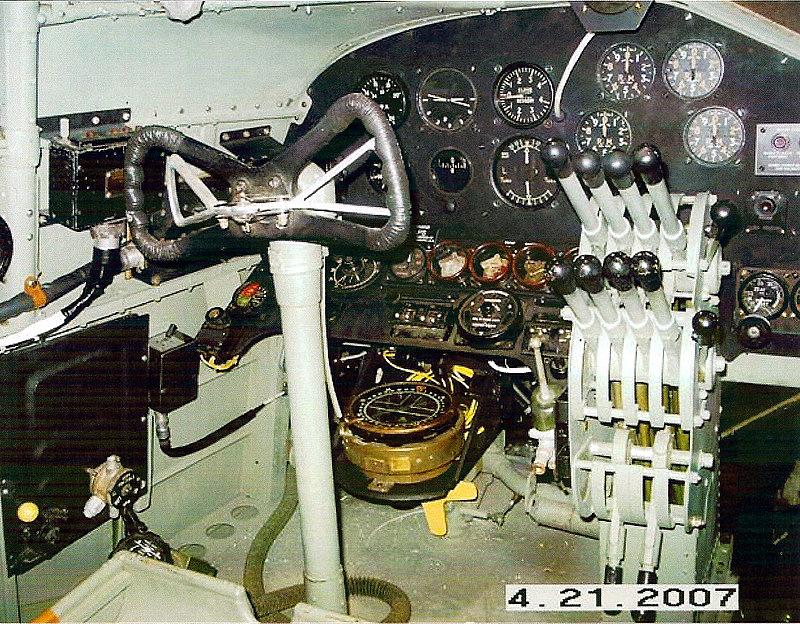
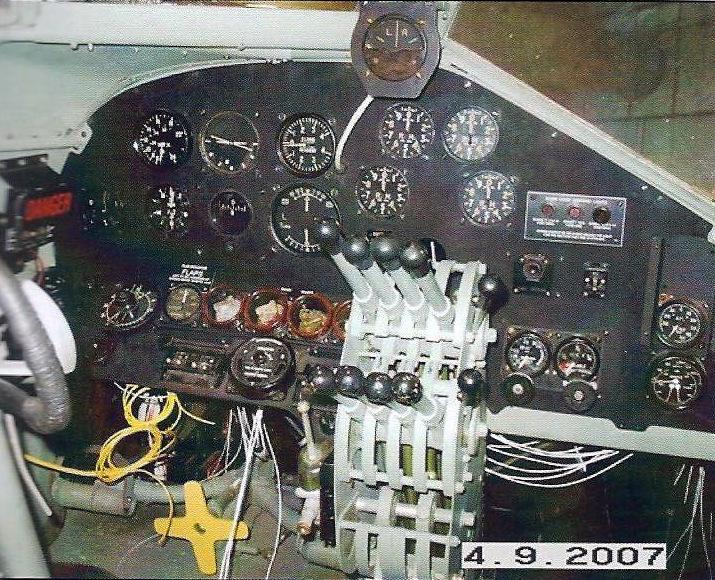
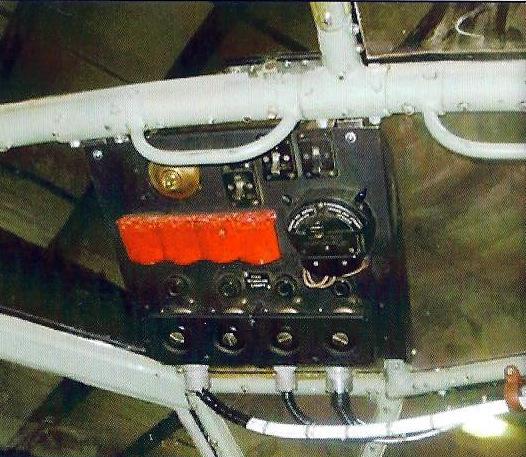
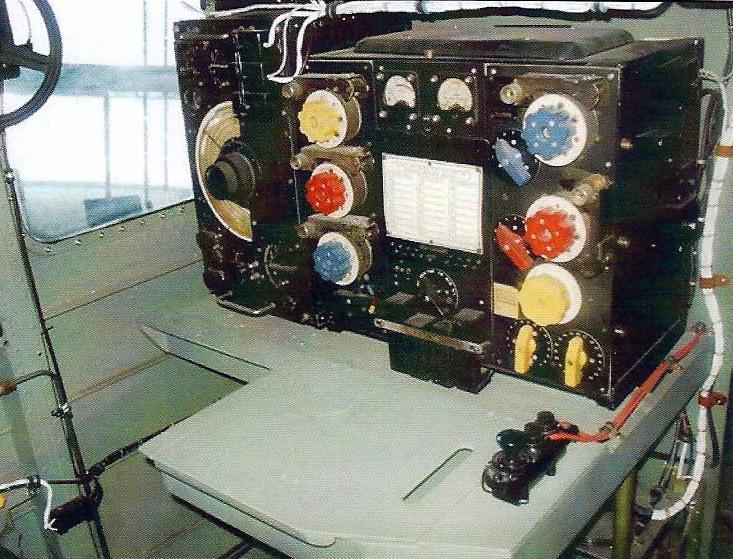
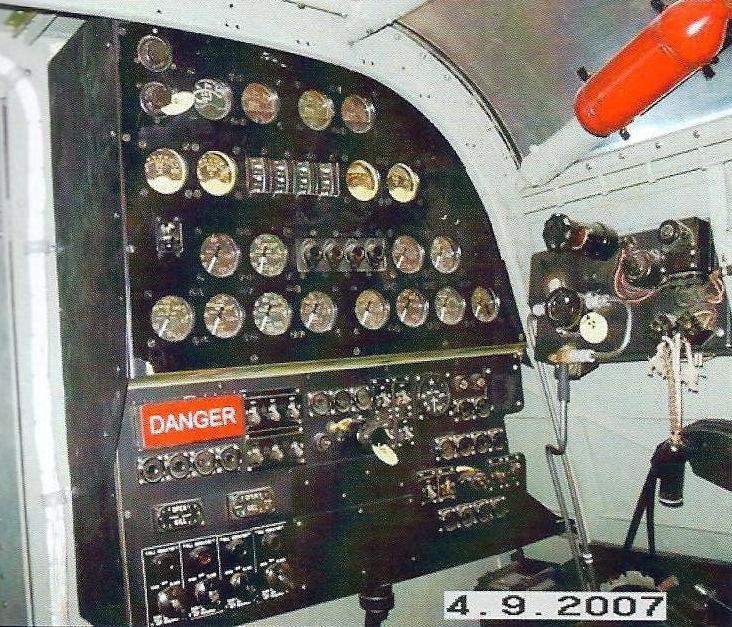
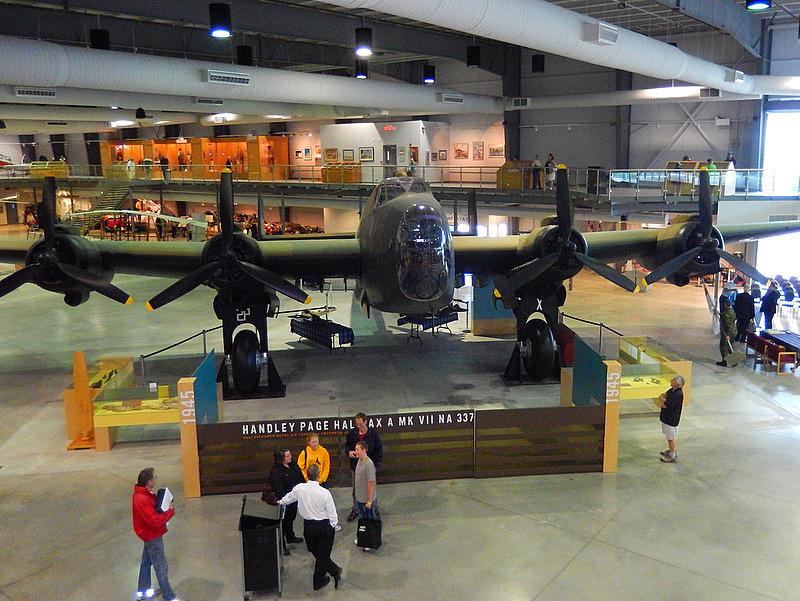
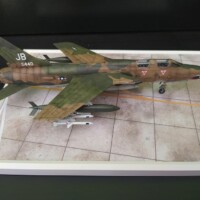
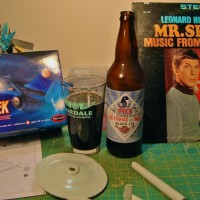
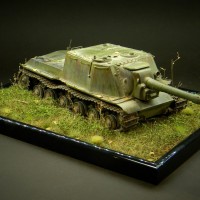
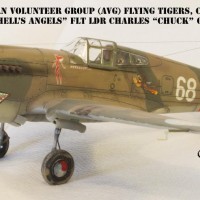
What a great post! Thank you so much. And to see this aircraft restored to this condition is truly amazing. I am rereading the Stackpole book, Night Flier/Mosquito Pathfinder. Night operations in WWII. and the references to these aircraft. Here is a quick note from this book as recorded...
[5 August 1944. Flying-bomb sites. 742 aircraft-469 Halifaxes, 257 Lancasters,16 Mosquitoes-of 4,5,6 and 8 Groups attacked the Forêt de Nieppe and St Leu-d'Esserent storage sites. Bombing conditions were good. 1 Halifax lost. 31 Lancasters and 8 Mosquitoes of 8 Group attempted to carry out small 'Oboe Leader' raids on 4 launching sites but only 9 aircraft succeeded in bombing. None lost.]
You can understand my appreciation for these images.
Thanks again.
California Steve
I am glad that you enjoyed the photos. That was my hope when I posted that people would. That sounds like an interesting book. I am in awe of the ability of the crews to fly those missions especially when you consider how young they were.
Beautiful photos of a truly remarkable aircraft that has been mostly overshaddowed by the Lancaster. A true testament to the fortitude of those brave airmen that flew her during WW II. Thanks for the superb photos!
Thanks Morne. It was a pleasure to see. Thanks for the compliments on the photos. I am just using a Nikon Coolpix S9400 and then touch them up with the free photo software Picasa.
Very cool post Allan. Makes me wanna drag out my old Matchbox Halifax and give it a go! Yorkshire Air(Elvington) Museum in England has a restored Halifax that is made from a string of parts they collected over a number of years (part of the rear fuselage section was found in Shetland or Orkney Isles and had been in use as a chicken coop!) Their Halifax is restored to represent a mark 3 - Friday the 13th. Great article mate, all hail the Hallibag 🙂
Thanks Gregor. Go ahead and take a crack at the Matchbox kit!
Alan, theres a pic of the Hendon Halifax (unrestored) in my article in the Airshows & Museums Group if you wanna check it out. Rob posted a load of pics from Hendon too in the same Group section, there maybe more in there.
Thanks Gregor. I remember looking at them when you posted but had forgotten them.
Question: Is there a way to simply post this album into the Airshows and Museums group or do I have to start from scratch and create a new album in that group?
Martin is probably best placed to advice you on that Alan. Mind you if you had posted it there you may not have got as many responses, which would have been a pity as its a great article.
http://www.yorkshireairmuseum.org/exhibits/aircraft-exhibits/world-war-two-aircraft. Have a look at this Alan. A few of the exhibits refer to RCAF as well as the Halifax III reconstruction.
Great build Alan, whoops,
Some lovely pics taken there Alan.
Nice to see a restored Halifax posted.
Thanks for the pics.
No problem Simon. I certainly had nothing to do with this build! It was impressive to see the finished work.
Thanks for sharing - these are the best photos I've ever seen of one these impressive aircraft.
Thanks very much Ralph. As I said to Morne above I am using the Nikon Coolpix S9400 and cropping and adjusting colour using the free programme Picasa. I am glad that you enjoyed them.
Thanx!
My pleasure P.K.
Outstanding pics of an aircraft not well appreciated. Unbelieveable shame, that poor crew dying like that, so close to the end. It is amazing what technology (and LOTS of bucks) can do with these wrecks now. Thanks for posting these.
Hi Bill. Yes it was very close to the end when they died. When it ended, the families would know how close it was. It is a remarkable job to restore this, but I have not been able to find how many man hours it took or what the final cost was. I can keep looking.
Very nice pics and story, Alan...thanks for sharing your trip. Any more info on those two models I can see on the table(s)...?
Thanks Craig. I have to confess that I was so focused on the real thing that I really took no notice of the models!
Fantastic amount of work here. I think there's another Halifax at the RAF Museum at Hendon that's still in a heavily corroded state - I think also recovered from Norway.
Hi Rob. Are you planning any trips to Hendon so you can share the pictures?!
Thanks Alan, great photos and really appreciated the information about the crew and their fate.
Thanks Rick.
Great photos. Thanks for sharing! I'd really love to see one in 1/48.
Glad to share them John. I think I would stick to 1/72.
Looks like you had a good day out there, Alan, thank you for sharing it with us.
It was a good day George. I will post some other photos of other exhibits. There is an outdoor display park where the planes are not in good a shape.
Alan,
Great post and beautiful photographs of a beautiful airplane
Thanks Frank. Good chance to practise with the camera.
Thank you for posting. Wonderful restoration. One of these not in limited run, in 1/48 would be nice.
No problem Paul. Glad others could enjoy them.
Stunning pictures of this great restauration,thank you for sharing Alan.
You're welcome Bernd. I am glad you enjoyed them.
Absolutely,great pics ! Thank you for sharing.
Great post, I saw the Halifax at Hendon, what a huge effort to restore this one...like the Spitfire/Hurricane, the Halifax so overshadowed by the Lancaster, which is a pity. So few kits of it sadly, I think only Airfix and Matchbox in 1/72, with one limited edition 1/48th?
Revell of Germany released a new tool 1/72 Halifax last year, but apart from thoses listed by your good self thats it i'm afraid.
Thanks James. I had been hearing about it for some time but never got there to see it. Since I am only an hour or so a way there was no excuse so made sure I got there this summer.
thanks for the photos, a truly beautiful "ugly" Hally. My great uncle was a Flying Officer with the 432 Leasides Squadron RCAF and his Halifax was shot down by a Junkers JU 88 over Worms Germany Feb 21, 1945. Really great to see the restored aircraft in all its glory. I had no idea this aircraft existed today, I will definitely have to make my way to Trenton some day. Thanks again!
Thanks Keith. It is a nice museum if you get a chance to visit. Did your great uncle survive the war, for you to know the details of the encounter with the Ju 88?
Hi Alan, I do have some details of the encounter with a JU 88, unfortunately my great uncle, Colin W. McMillan did not survive and is buried at the Rheinberg War Cemetary in Germany.
This excerpt from an RCAF publication in 1949 describes in some detail how his Halifax was shot down.
"A JU 88 made a stern attack on F/L E. S. Maguire’s aircraft as he was on his bombing run. FS F. T. McLachlan, the rear gunner, directed his skipper in evasive action while he returned the enemy’s fire. McLachlan saw strikes on the port engine and wing of the Junkers, but the Hally’s port rudder caught fire and the flames spread towards the rear turret. McLachlan continued firing and the pilot corkscrewed until the Jerry broke off. The turret was now beginning to burn and finally his skipper ordered the gunner to bail out. Missing with F/L Maguire were F/Ls J.G. Maguire and C. S. Moir, F/O C. W. McMillan, FS E. J. McClarty and Sgt. A. A. McDonald (R.A.F.)."
Thanks for your interest, Keith
Current restorations of WWII subjects is truly mind boggling. Not many years ago, an airframe such as this would have been considered beyond scrap recycling. Now they are rebuilt to factory specs - mind boggling.
All it takes is a LOT of money ! ANYTHING can be restored with enough ca$h !
Which is why I'll never have a restored aircraft !